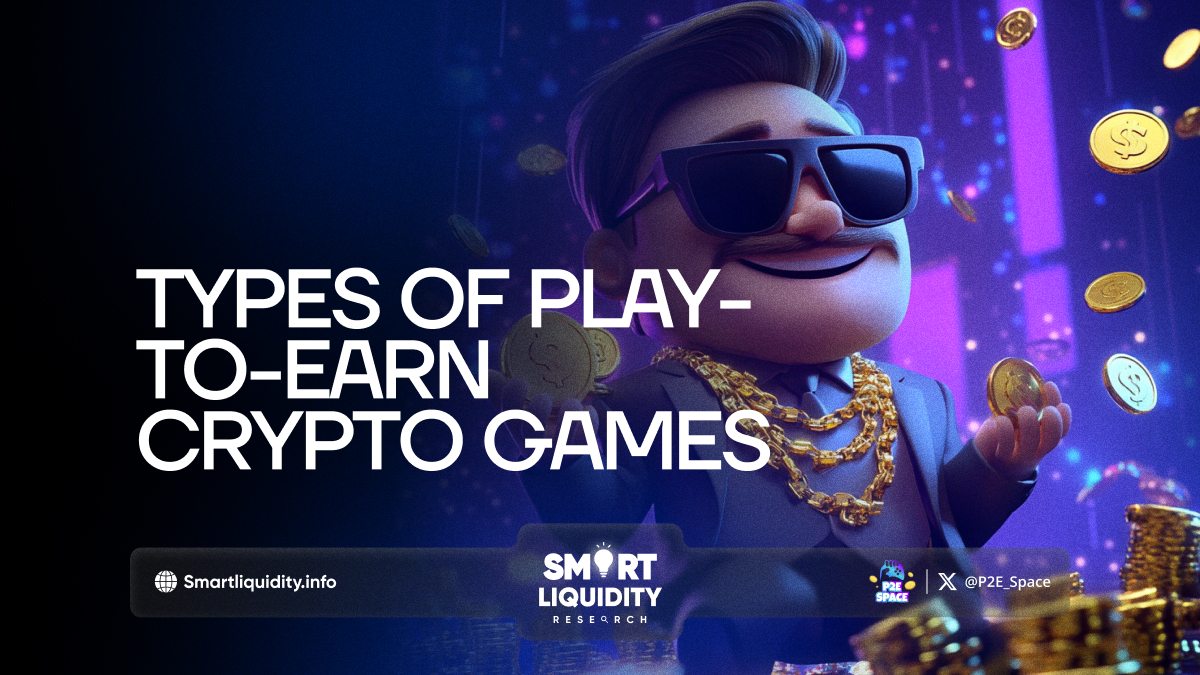Types of Play-to-Earn Crypto Games


The gaming world is evolving rapidly, and at the forefront of this revolution is the Play-to-Earn (P2E) model. Unlike traditional games where players invest time and money with no financial return, P2E games allow players to earn cryptocurrency or NFTs (non-fungible tokens) as they progress through gameplay. This model transforms the way we think about gaming, turning it from a leisure activity into a potential source of income. But not all P2E games are created equal. Let’s dive into the types of Play-to-Earn crypto games that are reshaping the landscape of both gaming and finance.
1. NFT-Based P2E Games
NFT-based games are perhaps the most recognizable type in the P2E ecosystem. In these games, players collect, trade, or sell in-game assets that are represented as NFTs. Each item—whether it’s a weapon, character skin, or piece of land—is unique and owned by the player on the blockchain. These items can be sold or traded on NFT marketplaces, often fetching substantial sums.
Example: Axie Infinity, where players collect, breed, and battle creatures known as Axies. These creatures are NFTs that can be traded for real money.
NFT-based games have gained massive popularity because they offer players true ownership of their in-game items, which they can sell at any time.
2. DeFi-Integrated Games
DeFi (Decentralized Finance) integrated P2E games are a new breed where gaming meets decentralized finance. In these games, players can stake tokens, participate in yield farming, or provide liquidity while also engaging in gameplay. These activities earn rewards in the form of in-game tokens or governance rights in the game’s ecosystem.
Example: Alien Worlds, which blends mining, exploration, and governance. Players can stake tokens to increase their mining rewards or participate in decision-making within the game’s DAO (Decentralized Autonomous Organization).
These games bridge the gap between the gaming economy and DeFi protocols, giving players more opportunities to earn through various financial activities.
3. Metaverse P2E Games
Metaverse-based P2E games are immersive virtual worlds where players can create, explore, and even monetize their experience. Within these metaverses, players can buy and sell land, create businesses, or even host events. The idea is that players are not just gamers but entrepreneurs, architects, or entertainers within these vast digital universes.
Example: Decentraland, where users can purchase virtual land, build structures, and sell experiences like games or digital art galleries, earning revenue through the platform’s native cryptocurrency.
In the metaverse, the only limit is your imagination, and with the earning potential so vast, it’s no wonder this type of P2E game is gaining ground.
4. Battler P2E Games
If you’re a fan of competitive gaming, battler P2E games offer an exciting way to earn while battling it out with other players. In these games, players usually control characters or units, often in a strategy-based format, fighting to win rewards like tokens or NFTs.
Example: Thetan Arena, where players compete in MOBA-style battles, earning in-game currency for every victory. These rewards can be withdrawn as real money or reinvested to upgrade the player’s avatar or abilities.
These games add an adrenaline rush to the P2E model, appealing to those who thrive on competition.
5. Move-to-Earn (M2E) Games
A creative twist on the P2E concept, Move-to-Earn games reward players for physical activities like walking, running, or even dancing. This model integrates fitness with gaming, making staying active a way to earn cryptocurrency.
Example: STEPN, an M2E game where users buy NFT sneakers and earn crypto by walking or jogging in the real world.
By gamifying fitness, Move-to-Earn games not only promote health but also give users the chance to profit from their daily activities.
6. Simulation and Idle Games
For those who prefer a more laid-back gaming experience, simulation and idle games offer a passive way to earn. These games simulate real-world activities like farming, building cities, or managing businesses. Players earn by optimizing their systems, producing goods, or completing tasks within the game world.
Example: Town Star, a farming simulation where players develop their land, harvest crops, and compete for weekly rewards, all while earning cryptocurrency.
Idle and simulation games are perfect for those who want a steady stream of income without needing to actively play all the time.
The Appeal of P2E Games: Why Players Love Them
What makes P2E games stand out is their ability to give players financial freedom and control. Instead of just spending money on a game, players can now make money. Whether it’s trading rare NFTs, competing in battles, or investing in the metaverse, the earning possibilities are endless.
Moreover, P2E games offer a level of immersion and ownership that traditional games simply can’t match. In a world where time equals money, why not play a game that rewards your time with actual cryptocurrency?
Conclusion
The Play-to-Earn model is redefining the future of gaming, providing players with opportunities that go beyond entertainment. From NFT-based games to DeFi integrations, metaverse experiences, and even fitness rewards, P2E games cater to a wide range of interests and play styles. Whether you’re a competitive gamer, a casual player, or someone looking to explore new forms of digital ownership, there’s a P2E game for you.
Jump in, play, and earn—because in this new world of gaming, everyone has the chance to level up in more ways than one.




